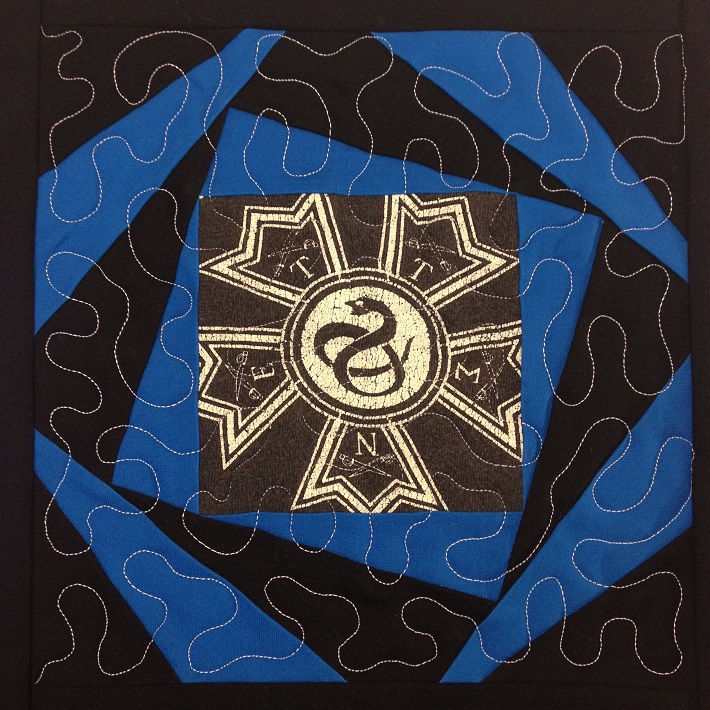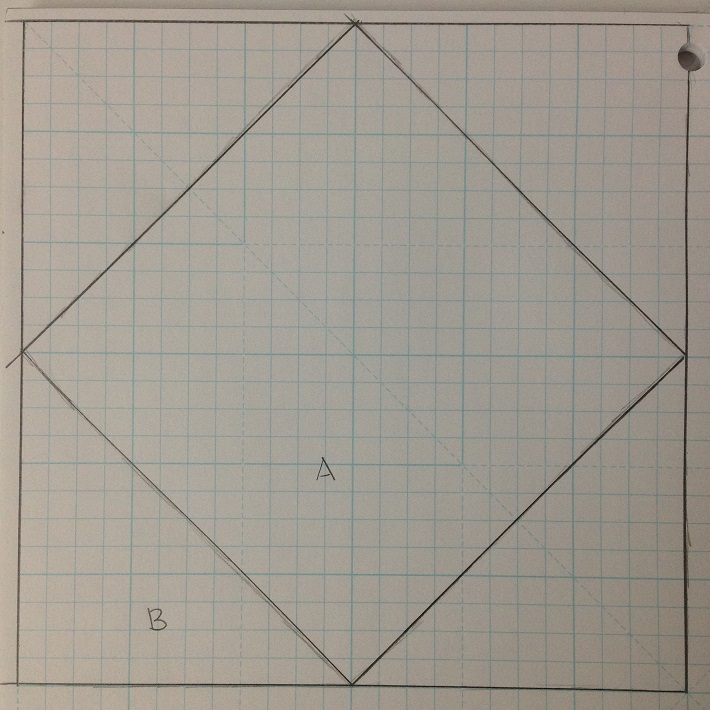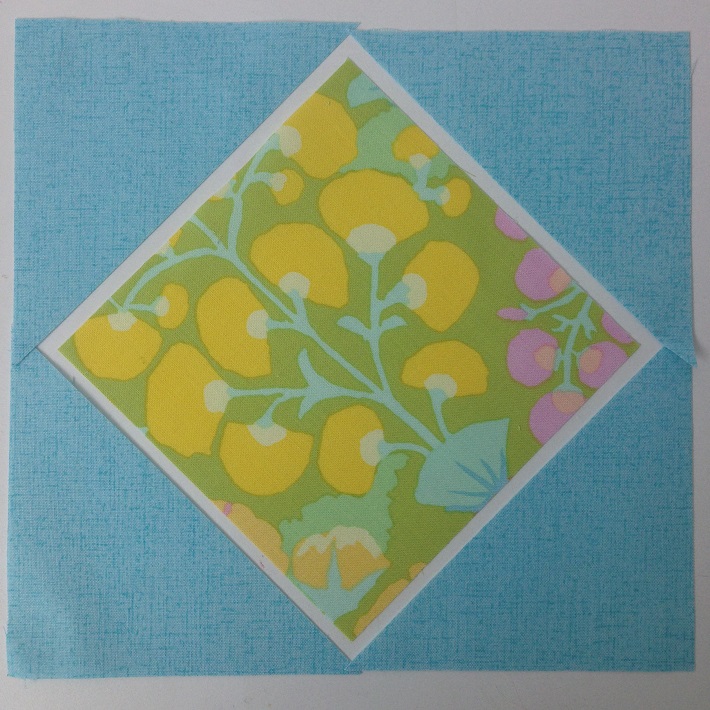Square in a Square is one of my favorite quilt blocks and was actually the first block I ever attempted piecing, way before I understood a single rule of traditional quilt piecing.
 Back when I pieced this this block, I didn’t understand the importance of good quality fabric or accurate seam allowance. I used white and pink cotton fabric that was so thin I can easily see through the material, and had such a loose weave it was nearly impossible to piece with.
Back when I pieced this this block, I didn’t understand the importance of good quality fabric or accurate seam allowance. I used white and pink cotton fabric that was so thin I can easily see through the material, and had such a loose weave it was nearly impossible to piece with.
But how did the seams miraculously match so nicely? I paper pieced these blocks over a diagram drawn on graph paper.
I had no idea how to do the math to cut out these shapes and piece them together, but I knew the basics of paper piecing thanks to an excellent Sewing with Nancy episode on TV. While the inside points matched nicely, I had no clue what I was doing when it came time to connect several blocks together as you can clearly see in the photo below:
Fast forward many years and paper piecing is still a method I rely on for tricky piecing. My Spinning Square T-shirt block was paper pieced first because I didn’t want to consider cutting all those weird shaped pieces with templates.

But would I still use paper piecing for a Square in a Square block today? When I first thought about it, I wasn’t quite sure. I didn’t know off the top of my head how to calculate the size of the shapes. I wasn’t feeling very confident about my ability to cut the shapes the right size to create a 6 ½-inch block.
So I decided to make it a challenge to figure out the math and finally piece a Square in a Square without paper piecing.
Calculating the shapes for a Square in a Square block
Calculating the shapes seems to be the hardest part of piecing for many quilters. How do you know how big the on-point center square should be? How do you calculate the triangle size?
I started by drawing a picture of the block I wanted on graph paper:

I drew this diagram of the FINISHED block, meaning it was only 6 inches square. I’ve learned from designing pieced blocks in the past that it’s best to draw the finished layout, then add the seam allowance at the end to each piece.
With the drawing created, I did the simplest thing I could think of — I measured each piece.
I found the center shape was 4 ¼ inches square and the triangles were 3 inches long on the short sides. Now I needed to add seam allowance, and in the case of the triangles I needed to add extra for the diagonal cut.
So the center square size of 4 ¼ plus two ¼-inch seam allowances makes for a 4 ¾ inch center square.
For the triangles, I used the same calculation for half-square triangles and added 1 inch to the finished triangle size — 3 inches plus 1 inch equals 4 inches. These triangles were designed to be cut first as 4-inch squares, then cut in half diagonally to make the triangle pieces.

I knew this block would finish slightly big because I like cutting my half square triangles slightly big, then trimming down the sides to square up perfectly. My motto is you can always cut down accurately, but it’s impossible to add back what you don’t have!
Cutting and piecing a Square in a Square block
So I cut out a 4 ¾-inch square from a Kaffe Fasset print and two 4-inch squares in blue, sliced the blue squares in half diagonally, and pieced it all together with an accurate ¼-inch seam allowance. As my son, James, says, “Easy peasy, lemon squeezy!”

I did need to trim up the edges a bit as I expected, but I’m delighted with being able to piece this block without paper. I’d allowed the math to intimidate me, but once I drew the design and measured the pieces, I knew I could cut and piece it accurately.
What do you think? Have you ever been intimidated by a particular block or technique? Have you let the prospect of doing some math stand in your way? It’s time to pull out some graph paper and a ruler and play!
Let’s go quilt,

Share tips, start a discussion or ask one of our experts or other students a question.
No Responses to “Leah Day’s Quilting Study: Piecing a Square in a Square Block”